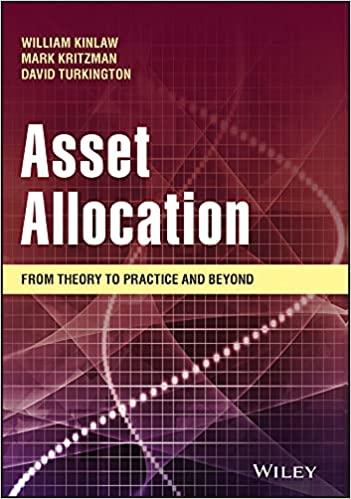Question
I know this may seem confusing, but can someone please help me with any of these questions to start it off? This is a problem
I know this may seem confusing, but can someone please help me with any of these questions to start it off?
This is a problem that just seeks to make up numbers and back them up so that they make since for a company. Honest Tea is a well known, successful company that went through a lot. They became very established by creating an affordable healthy Tea, but with way less sugar. They later expanded with different flavors and drinks and even considered a line for kids. I will take any help possible to get this problem started because it is very confusing to me. I appreciate it .
Propose a valuation of Honest Tea, at the time that it entered negotiations to be acquired by Coca Cola.
A simple formula for valuing a company is is profit/r where profit is the expected annual profit in a typical year and r is a typical rate of return on an asset that involves risks similar to investing in the company. You can make a reasonable guess about r (kudos if you justify it by looking at actual interest rate or stock market return data, but a guess is fine). So your main task will be to come up with an estimate of profit. Since profit is revenue minus cost, and revenue derives from demand, what you need then are the demand function and the cost function. For example, if demand is Q=a-bP and cost is C=cQ+dQ2+f, then profit= P*Q-C=(a/b-1/b)Q2-cQ-dQ2-f.
The first order of business is therefore to specify a demand function and a cost function (with real numbers, not letters). Explain in your report (i) the interpretation of the main parameters (for example, how the coefficient on price in the demand function relates to price elasticity) and (ii) how you can justify the values you chose for the parameters (if possible, based on information you have about Honest Tea). Do this for both the demand and the cost function. Be explicit on what youre assuming about the industry structure that Honest Tea competes in (monopoly? competitive? monopolistic? oligopolistic?), and the technology of producing tea (economies of scale?). The characteristics of iced tea as a product (income effects? are there important complements or substitutes? does advertising matter?). Be sure that your functions are actually consistent with this discussion.
In the risk scenario, consider one or more parameter changes that would be harmful to Honest Tea (such as a long-term income reduction, competitor price cut, new taste trends, higher resource costs, etc.), and explain why you believe its a plausible threat Honest Tea must be concerned about. Recalculate profit and the company value as a worst-case estimate.
Finally, highlight an opportunity for Honest Tea. Some possibilities are an investment in a cost-reducing technology or an increase in quality, an advertising campaign, an additional product line, a new incentive scheme that increases executive performance, or a strategic move that creates an entry barriers and thereby modifies the industry structure. You might want to demonstrate on another Excel worksheet how this project works, and how it influences a parameter in your demand or cost function.
Recalculate profit and the company value as a best-case estimate. There are no strict formatting requirements you need to adhere to in your write-up or spreadsheet. In section A2, below, you can find a summary of the spreadsheets for each chapter, and the formulas in them. Why is a company that makes profits of profit each year worth approximately profit/r? To understand this formula, you first need to know about the concept of time value of money. How much is $1 received a year from now worth today? In other words, if you could choose between $x today and $1 next year, what does x need to be so that you would be indifferent? If you invest $x for one year, you would have (1+r) $x next year, where r is the rate of return on investments. You will be indifferent between getting $x today and getting $1 next year if (1+r)*(1+r)*$x=(1+r)2 * $x after two years. In general $profit in t years is worth $x today, so that (1+r)t*$x=$profit. This means x= 1/(1+r)t
Step by Step Solution
There are 3 Steps involved in it
Step: 1

Get Instant Access to Expert-Tailored Solutions
See step-by-step solutions with expert insights and AI powered tools for academic success
Step: 2

Step: 3

Ace Your Homework with AI
Get the answers you need in no time with our AI-driven, step-by-step assistance
Get Started


